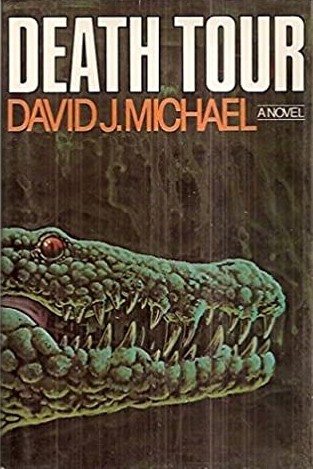 By DAVID J. MICHAEL (Bobbs-Merrill; 1978/79)
By DAVID J. MICHAEL (Bobbs-Merrill; 1978/79)
These days it’s common for would-be filmmakers to turn their unproduced scripts into novels, although I’m not sure how prevalent that practice was back in the seventies. Yet reading David J. Michael’s DEATH TOUR, a largely forgotten but fairly potent seventies horror fest, I couldn’t help but picture it as a low budget movie: it’s extremely action heavy and has a tightly contained setting, not to mention a distinct three act structure.
The story involves five college journalists, whose ranks include the narrator Tom and his girlfriend Mary, who decide to do an expose on the famous urban myth about alligators living in big city sewers (having allegedly been purchased as pets back in the sixties and then flushed down toilets). This involves a visit to the home of Mary’s waste-water plant superintendent father to get a blueprint of the sewer system. Following the strict economy-of-characters law of screenwriting, you can count on Mary’s pa turning up again in the third act.
In the meantime the protagonists enter the sewers, where the majority of the narrative occurs. According to the front cover blurb, the environ is “a dark, underground labyrinth seething with fanged, clawed, flesh-rending bloodlusting beasts…” That’s not entirely accurate, but there are some scary critters to be found (whose appearances might as well be accompanied by creepy music cues), as well as a horrific mini-train ride through the darkness—and not to give anything away, but the whole thing climaxes with a very Hollywood-friendly explosion.
From a purely literary standpoint DEATH TOUR has its virtues. The writing is lean and pointed in the manner of a Richard Laymon potboiler (written before there were Richard Laymon books), with much gory action and impressively sustained suspense. It’s a definite page-turner, in short, and recommended.
However, I would like to have seen more of those “Fanged, clawed, flesh-rending bloodlusting beasts” I was promised. I guess too many such things are unfeasible in a low budget horror movie, which, again, this novel essentially is.
